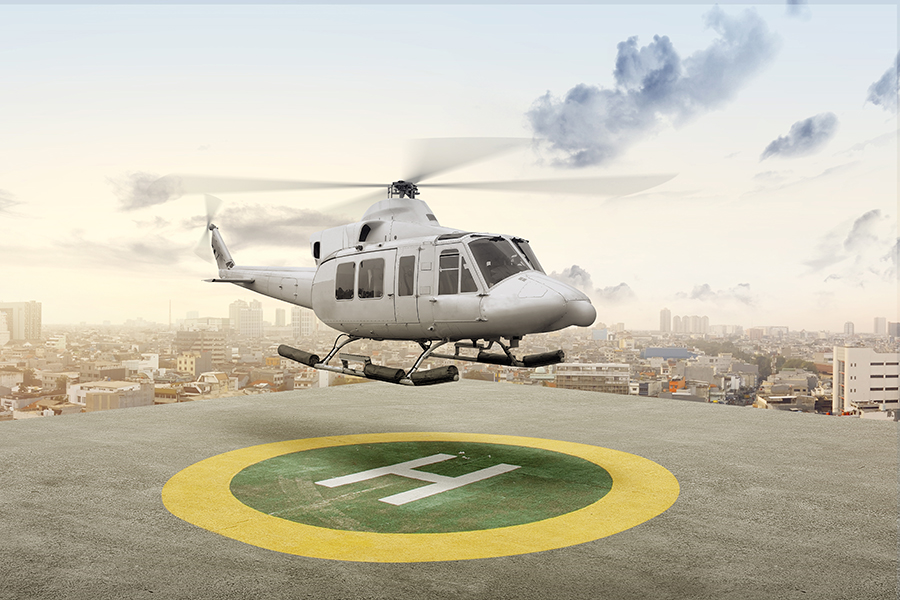Helicopters are the true flying machines. They can take off and land without the need for a runway. They can hover in the air. They can maneuver in any direction in a 360 degree space.
Airfoil Technology
Helicopters use the airfoil principle to generate lift. When the blades rotate relative to the air, the special airfoil shape will generate lift force and make them fly. The blades derive rotation from an engine, more specifically a turboshaft engine. The compressor sucks the air in and pressurizes it. Fuel is burned in this pressurized and hot air. The hot exhaust that leaves the combustion chamber passes through a series of turbine stages and make them trun
There are 2 sets of turbines. One turbine set turns the compressor, and the other set turns the helicopter’s rotor shaft. Jet engines of airplanes are used to generate thrust force. However, the primary function of the helicopter’s jet engine is to turn the rotor shaft.
Helicopter’s Controls
The most challenging part in helicopter operation is its controls. That means, how can it fly forward ? How can it fly backward ? Sideward ? Or how can it take a turn ? The answer is quite simple, just turn the helicopter towards the direction you want to move and just fly . When the helicopter is at an angle, the force produced by the blade is not vertical. The horizontal component of this force will make the helicopter move in the desired direction. The vertical component of the blade force will balance the gravitational force. Now the real challenge is how to turn the helicopter in the desired way.
Angle Of Attack
To learn the science behind helicopter turning, we need to learn more about the airfoil principle. The lift produced by an airfoil varies with the angle of attack. Generally, the greater the angle of attack, the more the lift.
Now think for a moment what happens if the one blade were at one angle of attack and others were at a different angle. The lift forces acting on the blades will be different in this case. The variation in the lift forces will definitely result in a torque that can turn the helicopter. It is clear that the blades must keep on changing angle of attack so that at one particular location the angle of attack is always the same.
Gyroscopic Precession
Gyroscopic precession is not a new phenomenon of physics. If you carefully apply Newton’s second law of motion to rotary objects you will be able to predict this phenomenon. According to Newton’s second law, force is the rate of change of linear momentum. Similarly, torque is rate of change of angular momentum.
Let’s consider the rotating blade. It will have an angular momentum. If you vectorially subtract the first angular momentum from the second, you can figure out the torque required for this operation It is interesting to note that to turn the helicopter forward the torque applied should be towards sidewards. That means to tilt the helicopter forward, the swashplate should tilt sidewards.
You can again verify from Newton’s second law of motion that if you keep the front portion at negative angle of attack at the back portion at positive angle the helicopter will simply turn sidewards. Gyroscopic precession is a truly intriguing phenomenon, but it conforms perfectly with Newton’s second law of motion.
If you just lift the bottom swash plate without tilting it, you can see how the angle of attack of all three blades will vary by the same amount. This means that the helicopter lift force will be same in all three blades and the helicopter can move up or down without any tilt. Such blade control is known as collective pitch
All the physics behind helicopter operation means that flying a helicopter is a truly challenging task. Minute variations in blade angles make huge variations in helicopter behavior. Often the pilot has to do two or more operations together to achieve the desired motion. Source: www.lesics.com/how-does-helicopter-fly.html, Credits: Sabin Mathew


